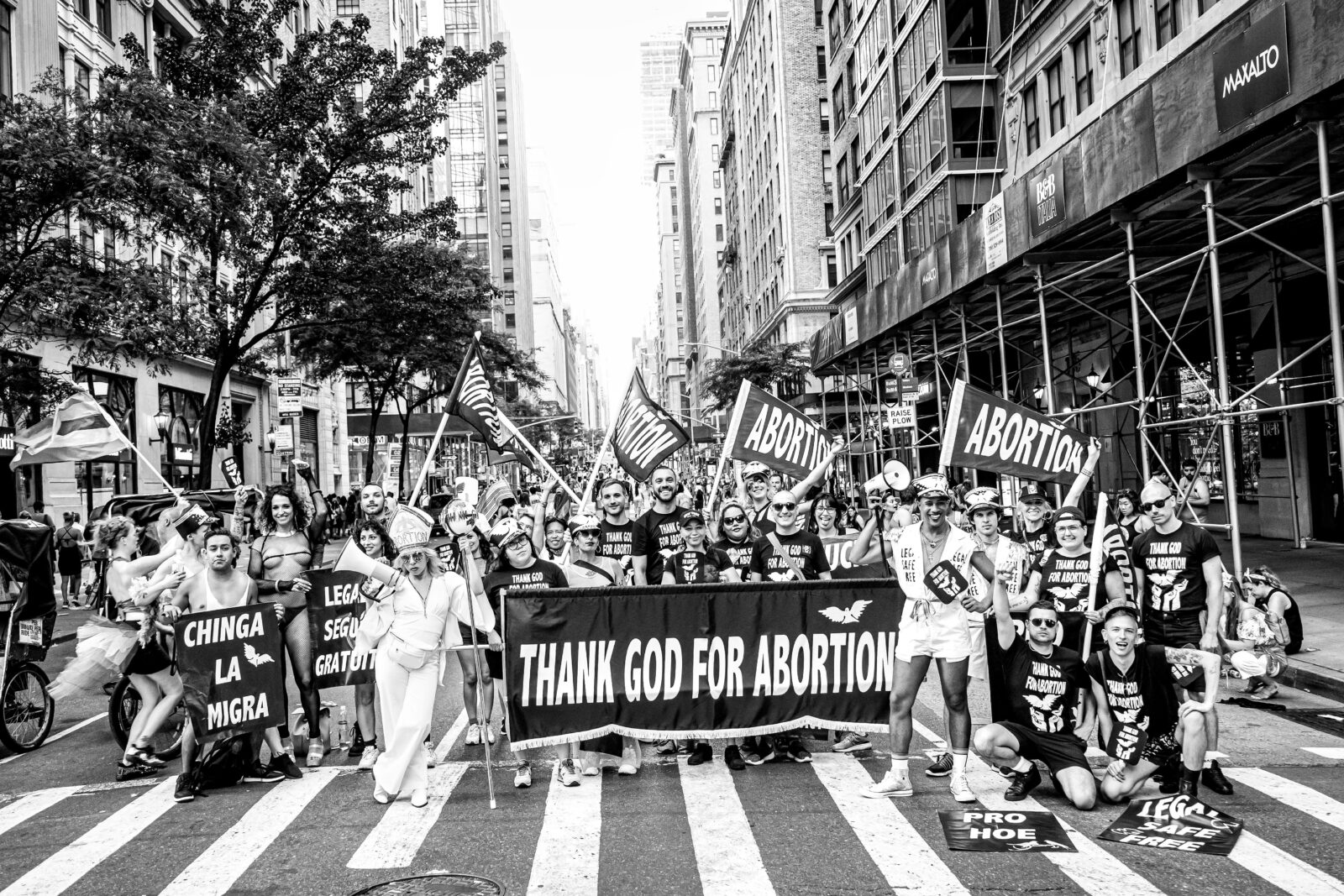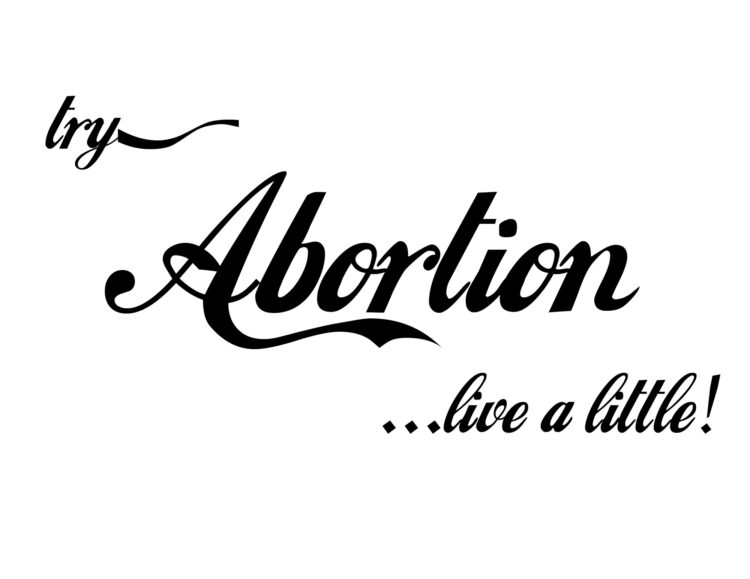Now is the time for radical art

The unprecedented decision of the Supreme Court to overturn Roe v. Wade and end the constitutional right to abortion has spurred many of us to action. In the days and months ahead, those of us who believe in reproductive justice will be making our case in the streets, in the courts, and in the halls of legislative bodies. As we turn to this important work, it is crucial that we do not ignore a realm that has a fraught relationship to politics: the practice of art and its power to change us.
Like politics, art deals in representation. Images, colors, and symbols are crucial to any political movement. From the crossed-out wire coat hangers on buttons and protest ephemera of the 1960s and ’70s to the “green wave” of recent activism in Uruguay, Argentina, and Mexico, the fight for reproductive justice has been no exception. The connection between art and abortion is perhaps even more profound, as both invoke a similar set of questions about agency, creation, and what our bodies are free to do.
Art can make visible and bear witness to people and experiences that have historically been silenced or erased. It can create representations or spectacles that reframe the debate, demand action, or offer rituals for repair. Perhaps most importantly, art can be a realm that demonstrates how our capacity for action—moral action, solidarity, or self-determination—exceeds what is delimited by the law. Because art can do more than represent an experience, perspective, or idea: it can also be an alibi for meaningful experimentation, and a realm in which we can imagine and enact the world we want.*
Today, I want to highlight the important role of artists in this struggle—and the many struggles ahead—by resharing an interview with 2022 Creative Capital grantee Viva Ruiz, originally printed in the The Brooklyn Rail, May 2022 Guest Critic section edited by Creative Capital President & Executive Director Christine Kuan. Viva Ruiz and I are both artists who have made work about abortion—a form of healthcare increasingly criminalized and rendered inaccessible in the US, and a social justice issue underrepresented in the art world. I spoke with Ruiz about freedom, abortion, and their ongoing project Thank God for Abortion (2015–present), which celebrates agency, the people who need an abortion, and the people who provide that care.**
Aliza Shvarts: “Freedom” is an idea that comes up frequently around issues like abortion, sex work, reproductive rights, and art. What is the body free to do? How do you relate to the idea of freedom in your work?
Viva Ruiz: The outrageous chasm between who gets to be supported in being wild and free and who doesn’t is probably why I am an artist. “Freedom” and “choice” can be tricky, the same way “consent” can be—what is consent when you’ve been set up to give everything always to everyone, to say yes always? Reproductive justice movements don’t use “choice” anymore because not everyone has equal access to the options that make a choice real.
As an artist, my own personal demand for bodily liberation first led me to make music and dance, through punk music and many years of sex work. This was also direct action—interventions, catharsis, and just plain survival work too. The abortion work I’ve done lately feels like extensions of those first expressions: rage, exorcism, shameless joy. I know how to build ecstatic spaces and nurture grieving spaces. Freedom means that it’s all art.
Shvarts: Angela Carter once wrote that, “A free woman in an unfree society will be a monster.” There is a risk to insisting on certain bodily or creative freedoms. What are the risks that you navigate in your work?
Ruiz: What I’ve risked the most is physical safety. The God-plus-abortion-plus-joy intersection is volatile—so much so that when Trump won the election, I considered stopping the project. There is a cost to speaking up and disrupting the flow—the “flow” being the unspoken rule that we take care of cis men and whiteness first. There’s a cost to speaking up for women and femmes, but even more so for BIPOC, queer, trans, and poor women—as the Combahee River Collective, Kimberlé Crenshaw, and Audre Lorde have named. If I don’t interrogate my own anti-Blackness and my own femmephobia, I’ll act on it like I was taught to do. And I’ve definitely felt like the monster bringing it up in whiter spaces.

Viva Ruiz, Try Abortion–Live a Little, 2015.
Shvarts: Abortion has recently been in the news a lot lately, from the abortion ban in Texas to the decriminalization in Colombia. Do you feel like, as an artist, you’ve been included in these non-art conversations?
Ruiz: I’ve felt really seen by the people who matter the absolute most to me, which are providers and people who have abortions. There is a ministering that Thank God for Abortion (TGFA) has been doing for years that has made a difference, and that’s been reflected to me by the people I’m doing this with and for. The only artist residency I ever had was not from an art organization, but from Shout Your Abortion—it was game changing to have support. I was finally invited this year to speak in DC with other repro people on the mic for the first time after years of doing this work, and that felt amazing (shout-out to We Testify). But at the end of the day, TGFA is a queer Latinx sex worker-originated artistic intervention. We feel outside both the art world and organized movement spaces: as always, it’s both painful and freeing to not fit in.

Still from Viva Ruiz’s Thank God for Abortion, Washington DC, 2021.
Shvarts: To me, the most exciting and important artwork that anyone can be making today is art that engages with politics—work that’s not only formally innovative, but uses the framework of art as an alibi for imagining and enacting change in the world. How do form and politics come together for you?
Ruiz: I love the idea of art as alibi! I use the word strategy, or even technology. Form and politics first came together for me in nightlife, and even before that in family parties, the communion of dance and music and food, rituals indigenous to our cultures, resistance to the kind of inhumane work schedules my immigrant family had no way of escaping. My fave art brings something that needs to change into focus—I am thrilled by this magic. Years ago I asked Sarah Schulman what advice she had to someone wanting to make a difference. She said, “Be effective.” I’ve held onto that as a guiding principle. Mixing Christian iconography with themes of abortion and joy was immediately effective, is still the guidance to keep going and no end in sight.

Still from Viva Ruiz’s Thank God for Abortion, the Vatican, 2019.
*Excerpted and adapted from “Abortions Will Not Let You Forget,” November Magazine, No. 32 (May 10, 2022): https://www.novembermag.com/content/abortions-will-not-let-you-forget
**Originally published in “Viva Ruiz with Aliza Shvarts: Freedom, Abortion, and Art,” The Brooklyn Rail (May 2022): https://brooklynrail.org/2022/05/criticspage/Viva-Ruiz-with-Aliza-Shvarts
